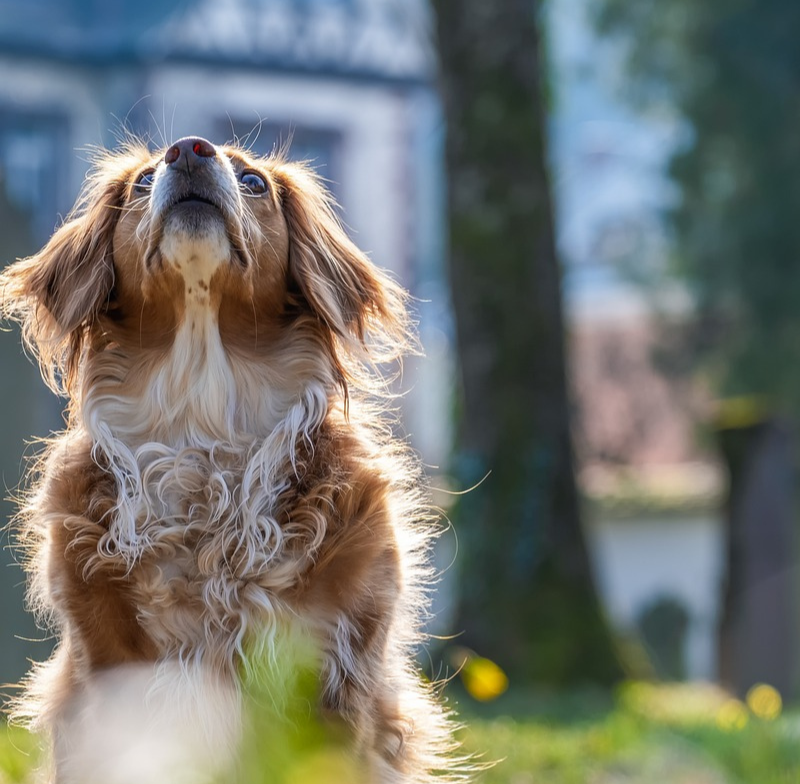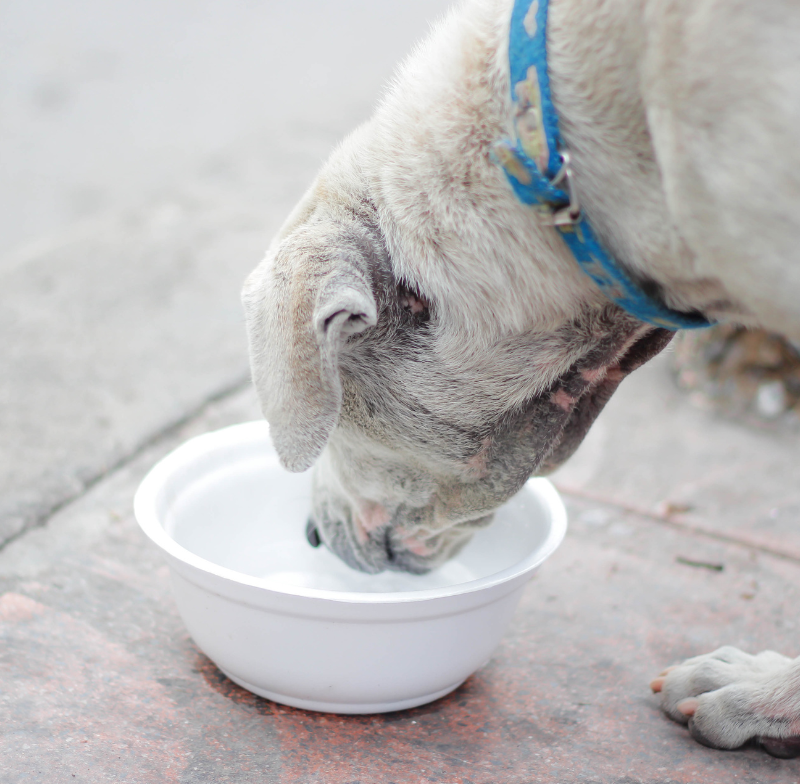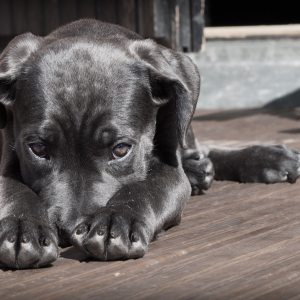Dogs are wonderful companions, but sometimes their behaviour can be puzzling. One common issue many dog owners face is their dog peeing when excited or scared. This behaviour, known as excitement urination or submissive urination, is especially prevalent in puppies and young dogs. Understanding why dogs exhibit this behaviour and how to address it can help both pet owners and their furry friends live happier lives. In this post we will explore some of the reasons why dogs pee when they are excited or scared.
Excited Peeing in Dogs
Excited peeing occurs when a dog is overly stimulated. This is common in young puppies whose bladder control is still developing. When a dog gets excited—such as when greeting their owner after a long day or meeting a new person—they may lose control and urinate involuntarily. This type of urination typically happens without the dog crouching or assuming a submissive posture.
The cause of excited peeing is primarily physiological. The dog’s nervous system becomes overwhelmed with joy and stimulation, causing the bladder muscles to relax temporarily. This response tends to lessen as dogs mature and gain better bladder control, but some adult dogs may still exhibit excited peeing due to heightened emotions.
Scared Peeing in Dogs
Scared peeing is another common issue, particularly in dogs with anxious or nervous dispositions. When a dog feels threatened or frightened, their body may respond with involuntary urination. This reaction is a natural response tied to their fight-or-flight mechanism.
Dogs who experience scared peeing often do so in situations that trigger fear, such as encountering loud noises, meeting new people, or experiencing punishment. Fear-induced urination can be more prevalent in rescue dogs or dogs that have experienced trauma in the past. Unlike excited peeing, which is triggered by positive emotions, scared peeing is linked to stress and anxiety.
Submissive Peeing in Dogs
Submissive urination is a behaviour seen in dogs that feel the need to show deference to a dominant figure, whether human or canine. This often happens when a dog is greeted with direct eye contact, a towering stance, or loud voices. It is a natural instinct meant to communicate that the dog poses no threat.
Puppies and young dogs commonly display submissive peeing as part of their social development. However, some adult dogs, particularly those with shy or anxious personalities, may continue to exhibit this behaviour into adulthood. Dogs with a history of harsh discipline or neglect are more likely to develop persistent submissive urination.
Does Food Help?
Diet plays a crucial role in a dog’s overall health, including bladder control. Providing a balanced diet with the right nutrients can support bladder health and muscle function. Some foods and supplements, such as those rich in omega-3 fatty acids and antioxidants, can help reduce anxiety and promote better urinary health. However, food alone is not a cure for excitement, scared, or submissive peeing but can be a complementary factor in a holistic approach.
Does Medication Help?
In some cases, veterinarians may prescribe medication to help manage excessive urination caused by anxiety or weak bladder control. Anti-anxiety medications, such as fluoxetine or trazodone, can help dogs with chronic anxiety that leads to scared or submissive urination. For dogs with weak bladder muscles, a veterinarian may recommend medications that strengthen bladder control. Medication should always be a last resort after behavioural training and environmental changes have been attempted.
Does Training Help?
Training is one of the most effective ways to address excited, scared, or submissive urination. Positive reinforcement training helps dogs develop confidence and control over their behaviour. Teaching basic commands such as “sit” and “stay” can redirect a dog’s focus and reduce overexcitement.
For dogs with scared or submissive urination, desensitization training can gradually help them become less reactive to triggers. This involves exposing the dog to fear-inducing stimuli in a controlled manner while rewarding calm behaviour. Building confidence through training helps reduce the likelihood of submissive peeing over time.
Does Patience Help?
Absolutely. Patience is one of the most important tools in addressing this issue. Many dogs grow out of excited peeing as they mature, and anxious or submissive dogs need time to build trust and confidence. Yelling or punishing a dog for urinating will only worsen the problem by increasing their fear and anxiety. Instead, staying calm and reinforcing positive behaviour will yield better long-term results.
Does Ignoring Help?
In some cases, ignoring the behaviour can be an effective strategy. When a dog urinates due to excitement, reducing the level of stimulation during greetings can help. Instead of greeting a dog with high energy, calmly enter the room and wait for them to settle before acknowledging them. For submissive peeing, avoiding direct eye contact and using a relaxed posture can prevent the dog from feeling intimidated.
However, ignoring should be combined with other strategies, such as training and positive reinforcement, to ensure the behaviour is addressed effectively.
Effects on the Dog
Frequent involuntary urination can impact a dog’s emotional well-being. Dogs who experience submissive or scared peeing may become more anxious if they sense their owner’s frustration. This can create a cycle where the dog pees more due to increased stress.
Additionally, frequent urination in the house can lead to hygiene issues and potential skin irritation for the dog. Ensuring proper cleaning and maintaining a stress-free environment can help mitigate negative effects.
How to Stop Excited, Scared, and Submissive Peeing
- Stay Calm: Dogs pick up on human emotions. Keeping greetings and interactions low-key can reduce excitement-related urination.
- Build Confidence: Engage in positive reinforcement training to help anxious dogs gain confidence and reduce submissive urination.
- Avoid Punishment: Never scold or punish a dog for urinating involuntarily. This will only increase their fear and worsen their behaviour.
- Improve Bladder Control: Encourage frequent potty breaks and reinforce good bathroom habits to reduce accidents.
- Provide a Safe Environment: Ensure your dog feels secure and has a safe space to retreat to when feeling overwhelmed.
- Use Desensitization Training: Gradually expose your dog to triggers in a controlled manner, rewarding calm behaviour.
- Consult a Veterinarian: If the behaviour persists, consult a vet to rule out underlying medical conditions or consider medication for severe anxiety.
Understanding why dogs pee when excited or scared is crucial in addressing the behaviour effectively. Excited, scared, and submissive urination are natural responses, often seen in puppies and anxious dogs. While food, medication, training, patience, and even ignoring the behaviour can all play a role in managing this issue, the key is to provide a supportive environment where the dog feels safe and confident.
By implementing proper training techniques, staying patient, and reinforcing positive behaviour, most dogs can overcome this challenge. If your dog struggles with this issue, remember that time, consistency, and understanding are essential in helping them develop better bladder control and emotional stability. With the right approach, you can build a stronger bond with your furry friend while keeping your home accident-free.
Featured Image by sun jib from Pixabay
If you enjoyed this post on why dogs pee when they’re excited or scared, see our Dog Care Category.
Discover more from A Tail of Two Dogs
Subscribe to get the latest posts sent to your email.





Leave a Reply